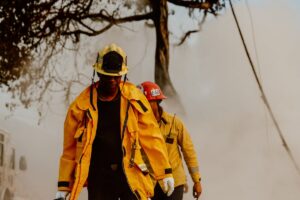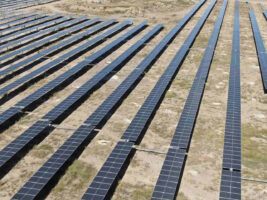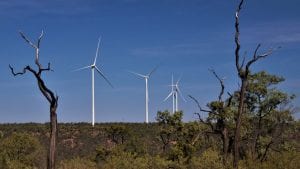It is clear that 2012 will be a critical year for cleantech in Australia. Costs for many technologies are falling rapidly, but critical decisions will be made about renewable energy targets and support mechanisms.
The carbon price will finally be introduced, the shape and purpose of the $10 billion Clean Energy Finance Corporation will be decided, reviews will be held into the Renewable Energy Target and many of the regulatory issues surrounding the energy industry, and on solar tariffs, tough decisions may be taken on programs such as Solar Flagships, and more funding will start to flow into cleantech R&D. And, of course, there will be the final version of energy White Paper.
We asked the heads of Australia’s energy and cleantech companies and industry groups for their predictions for the year. This is what they said:
Lane Crockett, general manager, Pacific Hydro
“For the Chinese, 2012 is the year of the dragon, but for Australia 2012 must be the year we move on renewable energy. After a number of years of policy uncertainty driven by constant adjustments to the LRET and a protracted carbon price debate we should start to see some confidence return to the market as these important reforms are hopefully now well and truly bedded down. Critically, 2012 sees compliance obligations of energy retailers under the LRET scheme start to escalate substantially.
“This will help to soak up any remaining oversupply of renewable energy certificates and should signal a strong surge in contracting activity. If liable parties are tardy and don’t prepare sufficiently for future escalating obligations they may find themselves paying substantially more for certificates than they were anticipating and rue the lost opportunity to lock in long-term low cost compliance. Underlying this opportunity is the combination of excess wind turbine manufacturing capacity and a strong Australian dollar leading to some of the lowest cost turbines for some time. Hopefully 2012 will be a year to remember for all the right reasons.”
Evan Thornley, CEO Better Place.
“2012 is the year of the electric car. It’s the year we’ll look back on and say: that’s when the transformation started – the biggest and most profound transformation to transport in over a century. Every major car-maker in the world has electric models either in production or in development. The auto industry has recognised it. Capital markets have recognised it. Governments have recognised it. Here in Australia, electric cars will arrive on our shores in mass volumes for the first time in the second half of the year. This means people can finally exercise a choice to drive something faster, quieter, cheaper and greener.”
Miles George, CEO, Infigen Energy
In the Australian renewable energy sphere I expect:
· the effectiveness of the large scale renewable energy target scheme will be significantly enhanced as residual surplus small scheme RECs are absorbed, and the scheduled review of the scheme confirms a stable future regulatory regime for the large scale renewable energy industry
· political partisanship on climate change response will diminish, and carbon emissions pricing will become much more widely accepted.
· wind and solar PV technologies will continue to significantly improve their cost competitiveness with burning fossil fuels, whilst other renewable energy technologies will struggle to keep up with the pace
· carbon capture and storage technology will increasingly be recognised as a pipe dream
Ben Waters, Australia director of ecomagination, General Electric
“2012 will be a year of action for Australia. All eyes will be on Australia as we introduce a carbon price from July 1st and become the new yardstick for global environmental policy. Business sustainability will become the new “business-as-usual”, with it being discussed at all levels of an organisation. Business leaders will focus on the opportunities that a low carbon world provides – finding new markets, developing new products and improving processes. Innovation will drive investment in the low carbon economy, and we will see more focus on gas and renewable energy as we put actions in place to meet our 20% renewable energy target by 2020. Broadly, we can expect to see much more discussion around ‘carbon productivity’ (GDP per tonne of CO2 emitted) as a new measure of economic growth as economies around the world begin to adapt to a low-carbon future. It’s going to be an exciting year for Australia.”
Jack Curtis, head of Australia and Asia-Pacific, First Solar
‘2012 will mark the year that Australia’s first utility-scale solar project becomes a reality – with the Greenough River Solar Farm to be fully operational mid-year. In the second half of last year, the Federal Government’s ‘Clean Energy Future’ package was released, and with it the possibility of two new independent bodies: the Australian Renewable Energy Agency (ARENA) and the Clean Energy Finance Corporation (CEFC). This year will be critical as it relates to the establishment of their respective mandates and their ability to support new project development in 2012.
“The Gillard Government has suggested that the CEFC could be functioning by mid-year. Both of these bodies will be vital to encouraging the next level of renewable adoption in Australia. Their ability to operate autonomously in concert with the private sector is also essential. If implemented effectively, our view is that the CEFC should alleviate the medium-term commercial viability gap that exists for emerging renewable technologies. Most importantly, the CEFC needs to facilitate and encourage private sector participation and adoption of new technologies.
“We had some positive movement from state governments last year, especially the ACT, with the announcement of a ‘reverse auction’ tariff program being established for large-scale solar. Outside the ACT, we also expect to see more utility-scale solar PV projects in development throughout Australia, with Western Australia being a key location given its strong macro drivers for solar. First Solar’s goal is to be the most bankable execution mechanism for utility-scale solar projects in Australia with a focus on driving the adoption of solar more broadly and a significant reduction in the cost of delivering solar electricity.”
Michael Ottaviano, CEO, Carnegie Wave Energy
My predictions for 2012 ….
· Solar pv will continue towards retail parity price driven by cheap Chinese manufacturing dominance,
· Wind turbine manufacturing will move in the same way to emerging market sand with the same result – costs also approaching pricing parity (although, unlike solar, at the wholesale level) and the slow decline of western turbine manufacturers (only investment in innovation and development of proprietary technology will be effective against China’s cheap cost of labour and capital),
· Billions of Euros will be committed in the EU offshore wind market – France will be the latest country to announce multi-GW projects
· The start of the Australian carbon price and resilience of domestic economy leads to renewed local interest in cleantech focused on carbon sequestering technologies such as Pacific Pyrolysis
· A shake out in marine energy as a few well capitalized and advanced developers deliver first commercial scale projects alongside major EU industrial partners including Carnegie who will commence construction of its first multi MW CETO project.
Carl McCamish, Executive General Manager, Policy and Sustainability, Origin Energy
“Cost will continue to be a big theme in the year ahead, with economic uncertainty and potentially rising unemployment keeping the sharp political and consumer focus on energy prices. No doubt the carbon price will be drawn into this discussion, as will the costs and inefficiencies of the myriad sub-scale, uncoordinated energy subsidies and incentive schemes that continue to exist at state and federal level to no long-term purpose.
“Hopefully the introduction of an emissions pricing scheme and the final publication of the federal government’s Energy White Paper will build some momentum about moving to a simpler, cheaper and more stable long-term policy environment. The carbon price should help focus investors on those technologies that can contribute to lower emissions and still deliver long-run returns to investors. It will be interesting to see how demand for rooftop solar panels holds up in 2012 as grid prices increase but solar subsidies decrease – we think this is an industry that is here to stay.
“When it was legislated, the vision was that the federal Renewable Energy Target (20% by 2020) would be met by a range of technologies. It is now clear that wind will have to meet the vast majority of that target and will need to do so in a much shorter period than expected because of the delays to wind projects caused by recent low REC prices. Whether this can be done in an environment where state policies are making it harder, not easier, to build wind is an issue that will need to be addressed before too long. At the end of the day it is either going to have to get easier to build wind farms or the aspirations of the RET are going to have to be met some other way.
“A final prediction for 2012: that the number of projects that genuinely meet the “sweet spot” of the Clean Energy Finance Corporation – that is, projects that are economically self-sustaining in the long-term but cannot attract private sector investment – will prove very small.”
Tony Wood, energy program director, Grattan Institute
“This year will mark the passage of a major milestone in Australia’s energy policy landscape with the introduction of an Emissions Trading Scheme. However, It is also shaping as a year of challenge for renewable energy. Whilst global demand and supply is like to favour low cost solar PV, the forward market for renewable energy certificates, lack of progress with the Solar Flagship Program, the establishment hiatus for ARENA and the CEFC and the pressure on governments to contain the cost of feed-in tariffs suggest a tough year.
“Deployment of wind and solar PV in Australia has been strong recently, driven by the Renewable Energy Target, rebates and feed-in tariffs. This deployment has come at a high price; at the same time as other factors are also pushing up energy prices. The political pressure will be difficult to resist. It’s hard to see what might turn things in favour of renewables as another interesting year begins.“
Kane Thornton, acting CEO, Clean Energy Council
“The year ahead presents big risks and big opportunities. If 2011 was about big policy announcements, the heavy lifting for 2012 will be on designing and implementing these measures. They have the potential to finally plug the policy gaps and provide support for every renewable energy and energy efficiency technology. This will include the establishment of the Australian Renewable Energy Agency and integration of its various grant programs (such as Solar Flagships), the design and legislation of the $10 Billion Clean Energy Finance Corporation and the National Energy Savings Initiative.
“The Federal Government will also be finalising their Energy White Paper and reviewing the Renewable Energy Target – something we know will incite much discussion and debate about the cost and benefits of clean energy. Meanwhile, state governments will keep exploring wind planning and reviewing solar feed-in tariffs. The community support we have enjoyed as an industry will continue to be tested by the media, who will enjoy highlighting any failings.
“And with all of that, it’s critical the industry continues to look over the horizon, and starts now on developing the grid of the future and ensuring we have the skilled workforce to achieve the 20% RET and beyond. As an industry that remains heavily reliant on government policy, the outcomes of all of these issues will have a material impact on every renewable energy business, if not now, then certainly into the future.”
Ray Wills, CEO, Sustainable Energy Association of Australia.
“With the level of incentives and engagement across government, business and the broader community, the transition to a clean technology future is not likely to be slow. Australia’s economy for the last 20 years has witnessed rapid technological transitions. In relation to the next wave of change to low carbon technologies, the response is likely to be an even faster transition, favoured by government policy measures and regulation, buoyed by consumer sentiment, targeted by corporate and government operations, and soon to see increased demand as renewable energy arrives at grid parity across Australia.
“In 2012, the most likely surprise announcement is something evo/revolutionary in the EV space in relation to battery pricing. For the most exciting product, I think Microheat’s rapid water heating technology, for both domestic and industrial applications will see rapid uptake this year, and announcements on broad range of application beyond water heating. The most likely innovation in renewables will be the commercial sector start making use of solar for microgen, and we will see a rush that will further push the solar market and bring down pricing and impact on distributed generation.”






